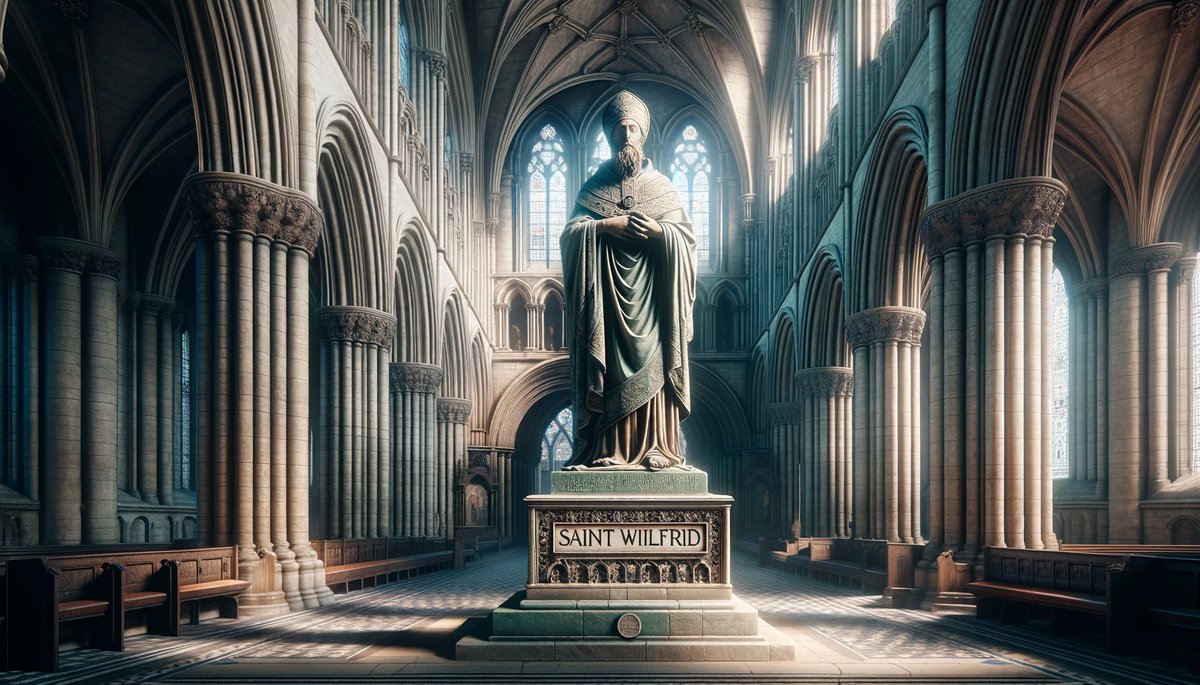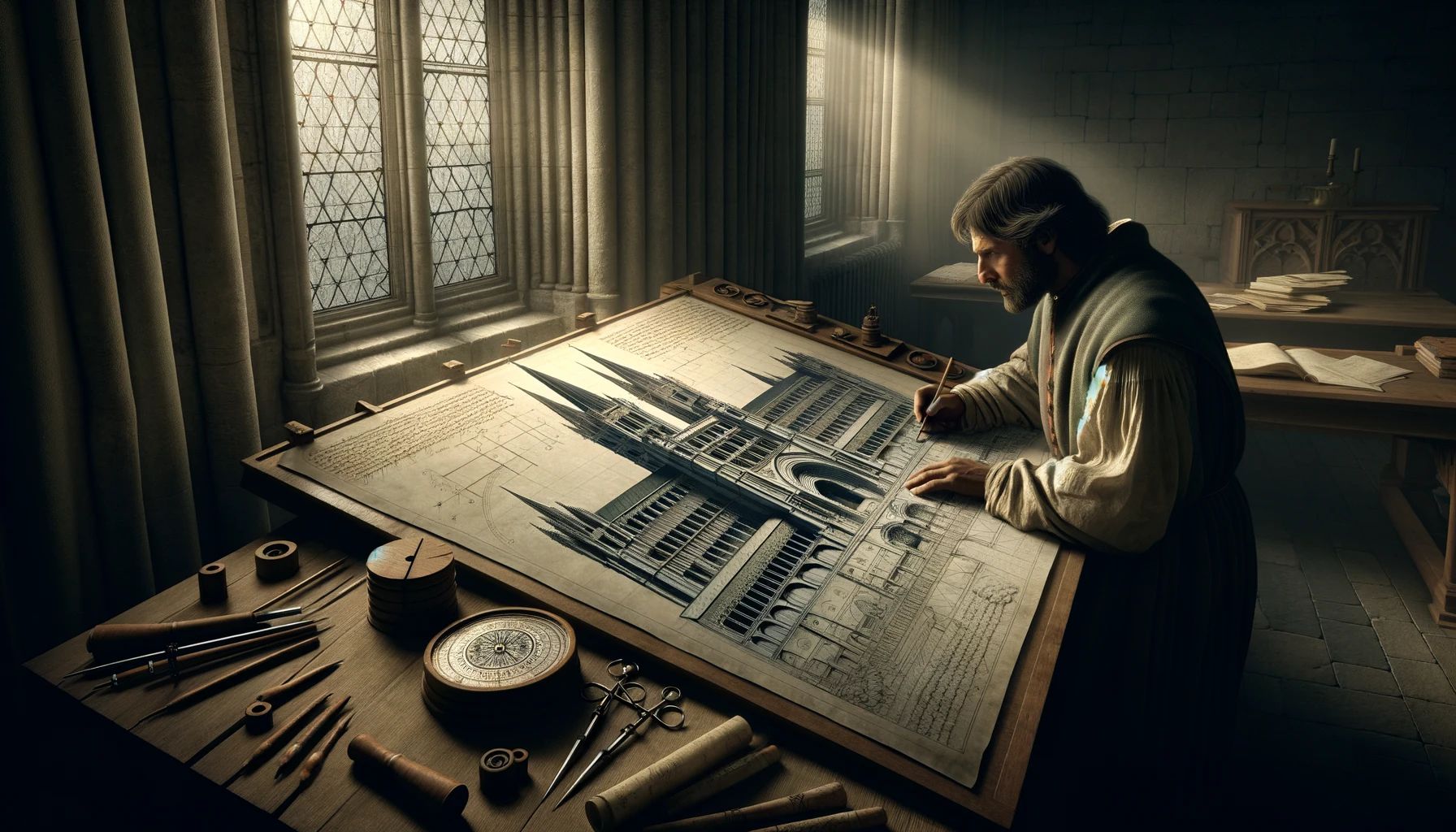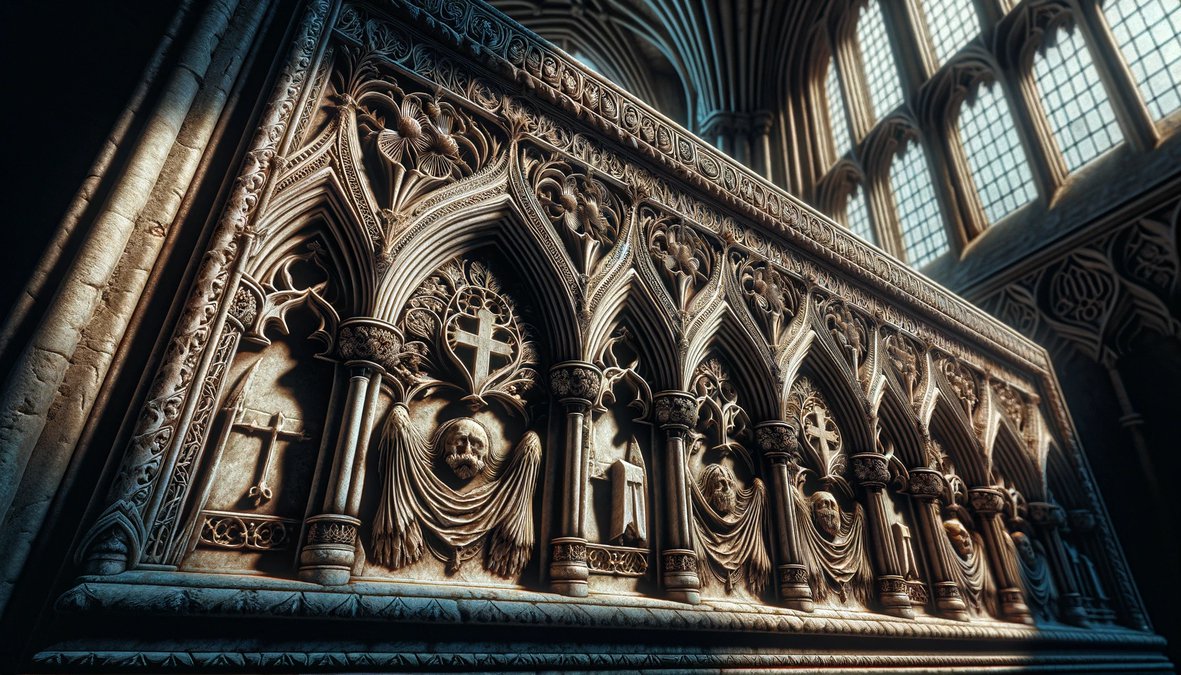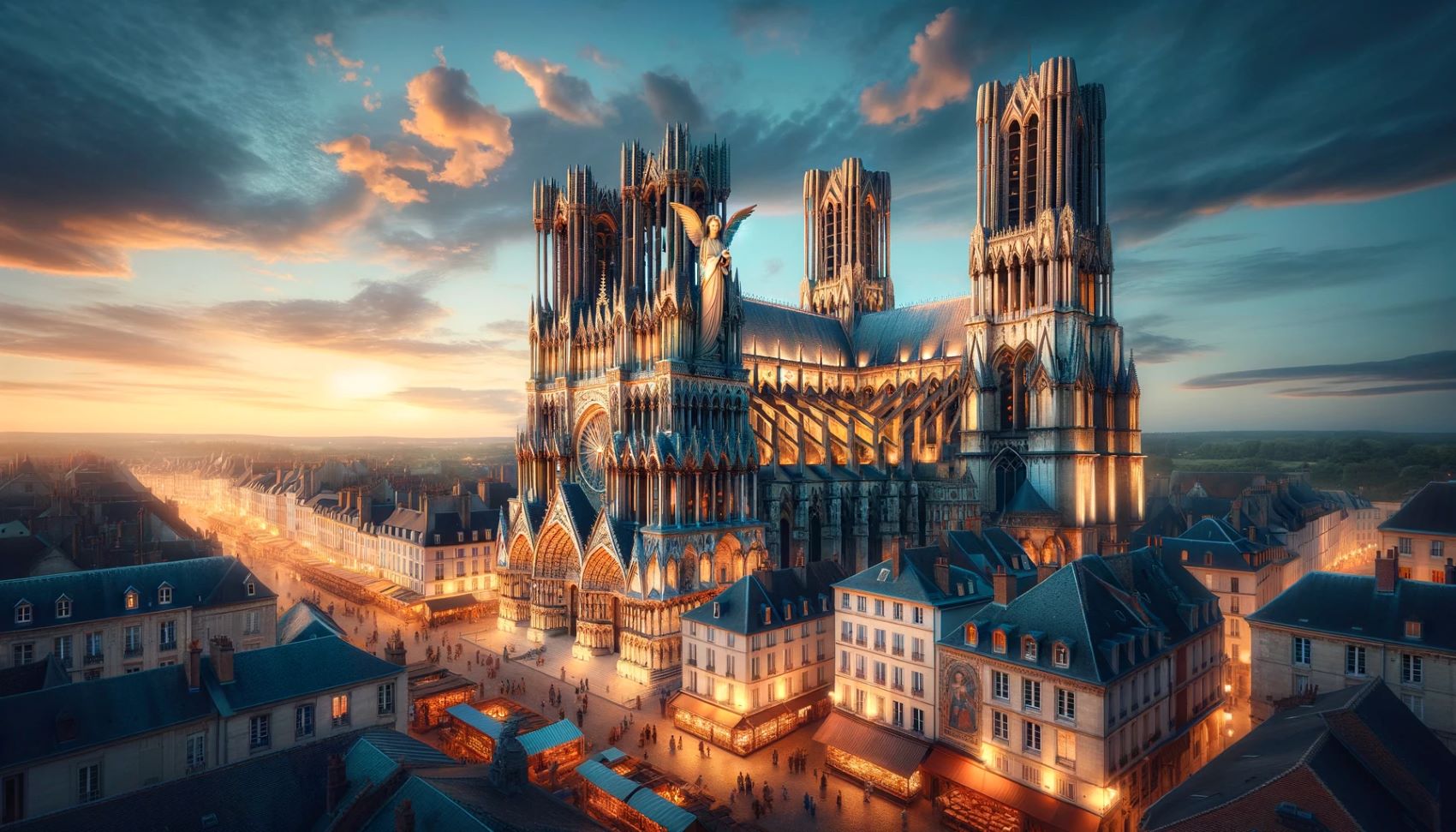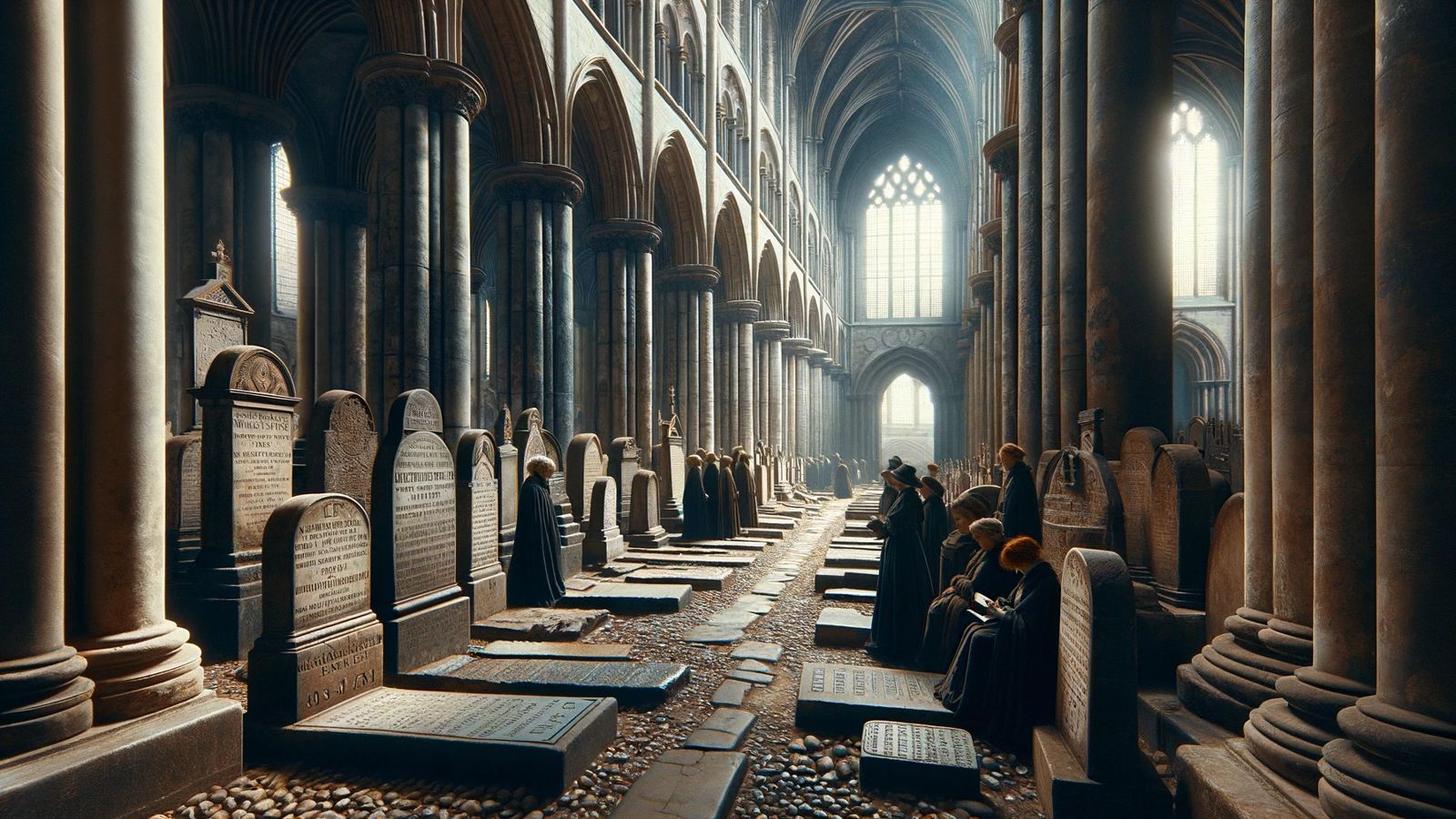Home>Arts and Culture>Who Owns Crystal Cathedral
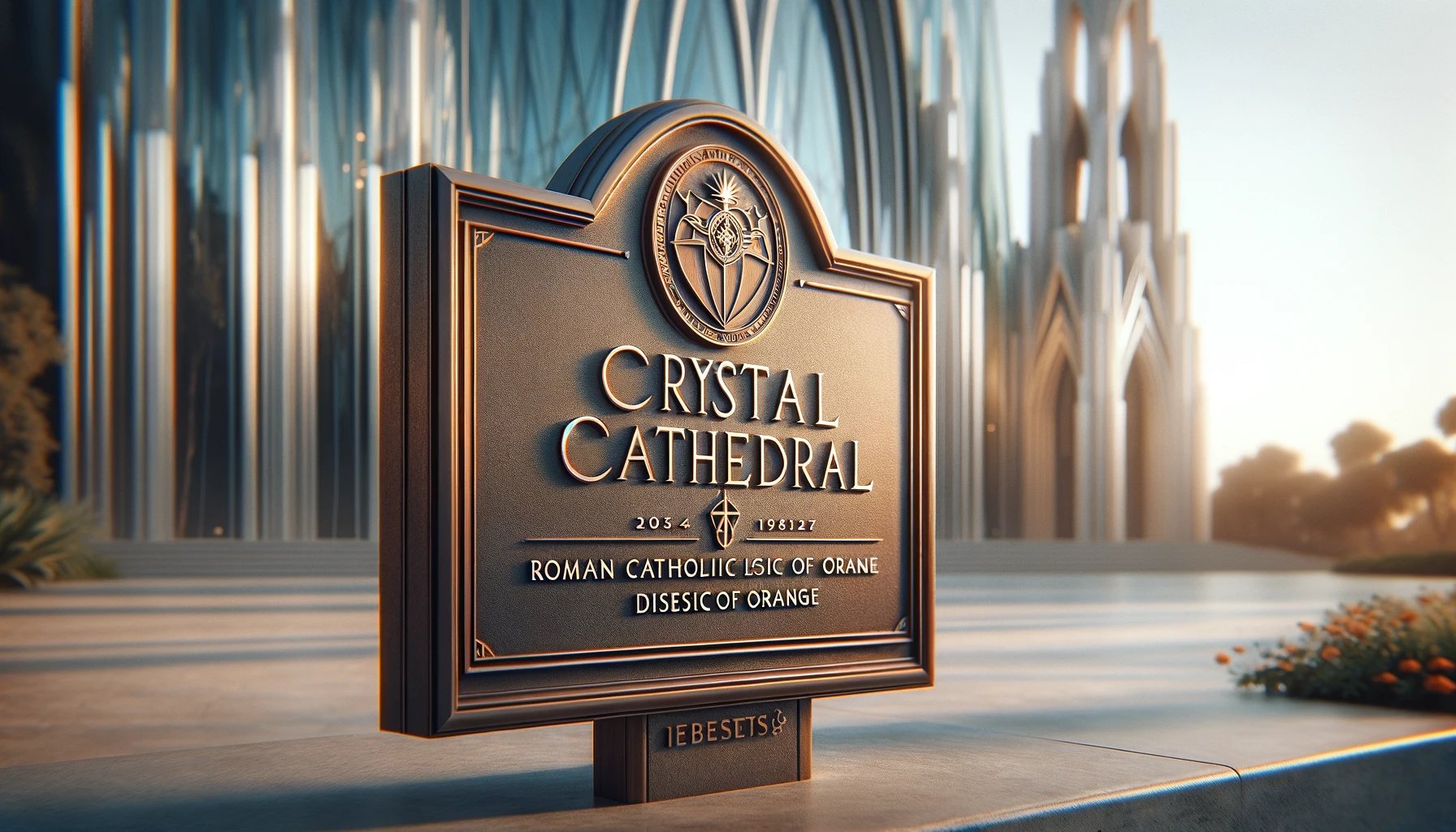

Arts and Culture
Who Owns Crystal Cathedral
Published: February 15, 2024
Peter Smith, Editorial Director at Christian.net, combines deep insights into faith, politics, and culture to lead content creation that resonates widely. Awarded for his contributions to religious discourse, he previously headed a major organization for religious communicators, enhancing dialogue on faith's societal impacts.
Discover the ownership of the iconic Crystal Cathedral and its significance in the arts and culture landscape. Explore the history and impact of this architectural marvel.
(Many of the links in this article redirect to a specific reviewed product. Your purchase of these products through affiliate links helps to generate commission for Christian.net, at no extra cost. Learn more)
Table of Contents
Introduction
The Crystal Cathedral, a renowned architectural marvel located in Garden Grove, California, has long been a symbol of grandeur and spiritual significance. This iconic structure, with its shimmering glass exterior and striking design, has captivated the hearts and minds of visitors from around the world. However, beyond its breathtaking facade lies a complex and intriguing history, marked by both triumphs and tribulations.
As we delve into the story of the Crystal Cathedral, we will uncover the fascinating journey of this extraordinary edifice, from its humble beginnings to its current ownership. This exploration will shed light on the pivotal moments that have shaped the cathedral's destiny and the individuals who have played a role in its evolution.
Join us on a captivating journey through time as we unravel the captivating tale of the Crystal Cathedral, a testament to the enduring power of faith, resilience, and the human spirit.
Read more: Who Owns Notre Dame Cathedral In France
History of Crystal Cathedral
The history of the Crystal Cathedral is a tapestry woven with threads of vision, innovation, and unwavering faith. It all began in the 1950s when Reverend Robert H. Schuller, a visionary preacher, embarked on a mission to establish a ministry that would transcend traditional church settings. His aspiration was to create a place of worship that would embrace inclusivity and inspire spiritual enlightenment.
In 1955, Reverend Schuller, along with his wife Arvella, founded the Garden Grove Community Church in a drive-in theater. This unconventional approach to congregational gatherings laid the foundation for what would eventually become the renowned Crystal Cathedral. The church's unconventional beginnings reflected Reverend Schuller's pioneering spirit and his commitment to reaching people in innovative ways.
As the congregation grew, Reverend Schuller's vision expanded, leading to the construction of the iconic Crystal Cathedral. Designed by renowned architect Philip Johnson, the cathedral's architectural brilliance was a testament to the fusion of faith and artistic ingenuity. The cathedral's ethereal beauty, characterized by its shimmering glass walls and soaring spires, became a symbol of spiritual transcendence and architectural excellence.
Throughout its history, the Crystal Cathedral served as a beacon of hope and inspiration, attracting worshippers and visitors from diverse backgrounds. Its renowned "Hour of Power" television program, featuring Reverend Schuller's uplifting sermons, reached millions of viewers worldwide, further solidifying the cathedral's impact on a global scale.
The history of the Crystal Cathedral is also marked by moments of adversity, including financial challenges that tested the resilience of the congregation and its leadership. However, the unwavering spirit of the community, coupled with the cathedral's profound significance, propelled it forward, ensuring its enduring legacy.
The journey of the Crystal Cathedral is a testament to the power of faith, innovation, and perseverance. Its history is a testament to the transformative impact of a visionary leader and a community united in their dedication to a shared spiritual journey. The next chapter of the cathedral's history would witness significant changes, shaping its destiny in unforeseen ways.
Founding of Crystal Cathedral
The founding of the Crystal Cathedral traces back to the visionary endeavors of Reverend Robert H. Schuller, a charismatic preacher with a bold vision for redefining the traditional concept of church architecture and congregational engagement. In 1955, Reverend Schuller, along with his wife Arvella, embarked on a remarkable journey by establishing the Garden Grove Community Church in an unconventional setting – a drive-in theater. This innovative approach to congregational gatherings set the stage for a groundbreaking evolution in the realm of spiritual architecture and communal worship.
The unconventional beginnings of the Garden Grove Community Church reflected Reverend Schuller's pioneering spirit and his unwavering commitment to reaching people in innovative and inclusive ways. As the congregation flourished, Reverend Schuller's vision expanded, leading to the inception of the awe-inspiring Crystal Cathedral. Designed by the esteemed architect Philip Johnson, the cathedral's architectural brilliance was a testament to the fusion of faith and artistic ingenuity. The ethereal beauty of the Crystal Cathedral, characterized by its shimmering glass walls and soaring spires, transcended conventional architectural norms, becoming a symbol of spiritual transcendence and architectural excellence.
The founding of the Crystal Cathedral marked a pivotal moment in the history of religious architecture, as it challenged traditional paradigms and embraced a bold, forward-thinking approach. Reverend Schuller's unwavering belief in the power of innovative design and inclusive spiritual experiences laid the foundation for a monumental legacy that would resonate with worshippers and visitors from around the world.
The inception of the Crystal Cathedral was not merely the construction of a physical edifice; it was the realization of a profound vision that sought to redefine the boundaries of spiritual expression and communal worship. The founding of the Crystal Cathedral stands as a testament to the transformative impact of visionary leadership and the enduring power of faith to inspire monumental achievements.
The journey from the humble beginnings of the Garden Grove Community Church to the awe-inspiring creation of the Crystal Cathedral exemplifies the extraordinary vision, resilience, and unwavering dedication of Reverend Schuller and the community he led. This founding moment would set the stage for the cathedral's enduring legacy and its profound impact on the spiritual landscape, transcending conventional boundaries and inspiring generations to come.
Financial Troubles
The history of the Crystal Cathedral, despite its remarkable achievements and architectural splendor, was not immune to financial challenges that would test the resilience of the congregation and its leadership. The cathedral, a symbol of spiritual grandeur and artistic innovation, found itself grappling with a daunting financial burden that threatened its stability and future.
The financial troubles that befell the Crystal Cathedral stemmed from a confluence of factors, including ambitious expansion projects, declining donations, and mounting operational costs. The grandeur of the cathedral, while awe-inspiring, came with substantial upkeep expenses, placing a strain on the church's financial resources. Additionally, shifts in societal trends and religious affiliations led to a decline in traditional forms of giving, further exacerbating the financial strain.
As the cathedral grappled with these challenges, it became evident that the magnitude of its financial obligations had surpassed its capacity to sustainably manage them. The accumulation of debt and the inability to meet financial obligations cast a shadow over the cathedral's illustrious history, prompting a critical juncture that demanded decisive action.
The financial troubles faced by the Crystal Cathedral were not merely a test of its fiscal resilience; they also underscored the broader implications of managing an iconic institution in an evolving socio-economic landscape. The congregation and its leadership were confronted with the formidable task of navigating a path toward financial stability while upholding the cathedral's legacy and spiritual mission.
The unfolding of the financial challenges within the hallowed walls of the Crystal Cathedral served as a poignant reminder of the complexities inherent in managing a revered institution, where the intersection of faith, finance, and stewardship converged. It was a chapter marked by introspection, strategic recalibration, and a collective resolve to safeguard the cathedral's future.
The financial troubles that beset the Crystal Cathedral were not insurmountable obstacles but rather pivotal moments that would ultimately shape its trajectory and redefine its place in the annals of religious history. The journey through financial adversity would set the stage for a transformative evolution, ushering in a new era for the cathedral and its enduring legacy.
The narrative of the Crystal Cathedral's financial struggles serves as a testament to the resilience and fortitude of its community, as well as a testament to the enduring spirit that would guide its path toward a new chapter of hope and renewal.
Sale of Crystal Cathedral
The sale of the Crystal Cathedral marked a pivotal juncture in its storied history, signifying a profound shift in ownership and stewardship of this iconic architectural masterpiece. The decision to sell the cathedral, a revered symbol of spiritual grandeur and architectural innovation, emerged as a consequential response to the formidable financial challenges that had cast a shadow over its illustrious legacy.
Amidst mounting debts and the pressing need for financial restructuring, the leadership of the Crystal Cathedral faced the daunting task of charting a course toward sustainable solvency while safeguarding the cathedral's spiritual mission. In a strategic move aimed at securing the cathedral's future, the decision was made to initiate the sale of this hallowed edifice, prompting a process that would capture the attention of the global community.
The sale of the Crystal Cathedral garnered widespread attention, drawing interest from various potential buyers who recognized the cathedral's profound significance and sought to become custodians of its enduring legacy. The bidding process, shrouded in anticipation and reverence, unfolded as a testament to the cathedral's enduring allure and the collective desire to ensure its preservation for generations to come.
Ultimately, the sale of the Crystal Cathedral culminated in a transformative transition of ownership, as a new custodian emerged to assume the mantle of stewardship over this architectural marvel. The transfer of ownership represented a profound turning point, as the cathedral embarked on a new chapter under the guardianship of individuals committed to honoring its legacy and revitalizing its place in the hearts of the faithful and the broader community.
The sale of the Crystal Cathedral was not merely a transaction of property; it was a symbolic passage that underscored the cathedral's enduring significance and the unwavering dedication to preserving its spiritual and architectural heritage. The transition of ownership served as a testament to the resilience and adaptability of this revered institution, as it embraced a new era guided by the collective aspirations of those entrusted with its care.
As the gavel fell, signaling the transfer of ownership, the Crystal Cathedral embarked on a journey of renewal and revitalization, poised to author a new chapter in its illustrious history. The sale of the cathedral represented a profound testament to the enduring spirit that imbued its hallowed halls, ensuring that its legacy would continue to inspire and uplift the hearts of all who crossed its threshold.
Read more: Who Owns Notre Dame Cathedral In Paris?
Current Ownership of Crystal Cathedral
The current ownership of the Crystal Cathedral represents a transformative chapter in the cathedral's storied history, ushering in a new era of stewardship and revitalization. Following the sale of the cathedral, the mantle of ownership was assumed by the Roman Catholic Diocese of Orange, marking a profound transition that would shape the cathedral's future trajectory.
Under the custodianship of the Roman Catholic Diocese of Orange, the Crystal Cathedral underwent a remarkable transformation, culminating in its rechristening as the Christ Cathedral. This reimagining of the cathedral's identity signified a profound commitment to honoring its spiritual legacy while infusing it with renewed vitality and purpose.
The Roman Catholic Diocese of Orange, entrusted with the stewardship of the Christ Cathedral, embarked on an ambitious endeavor to restore and enhance this architectural masterpiece, ensuring that its sacred essence would endure for generations to come. The diocese's vision for the Christ Cathedral encompassed a comprehensive revitalization effort, encompassing architectural enhancements, spiritual enrichment, and a renewed commitment to serving as a beacon of faith and inclusivity.
The transition of ownership to the Roman Catholic Diocese of Orange heralded a new chapter in the cathedral's history, characterized by a harmonious blend of reverence for its past and a bold vision for its future. The diocese's dedication to preserving the cathedral's architectural splendor and spiritual significance underscored a profound commitment to honoring its enduring legacy.
As the Christ Cathedral emerged under the guardianship of the Roman Catholic Diocese of Orange, it became a symbol of unity, faith, and cultural richness, welcoming worshippers and visitors from diverse backgrounds. The cathedral's transformation under its new ownership reflected a deep reverence for its heritage and a forward-looking approach to fostering spiritual enlightenment and communal engagement.
The current ownership of the Christ Cathedral by the Roman Catholic Diocese of Orange stands as a testament to the enduring spirit that animates this revered institution, ensuring that its legacy continues to inspire and uplift all who seek solace, enlightenment, and spiritual renewal within its hallowed halls.

